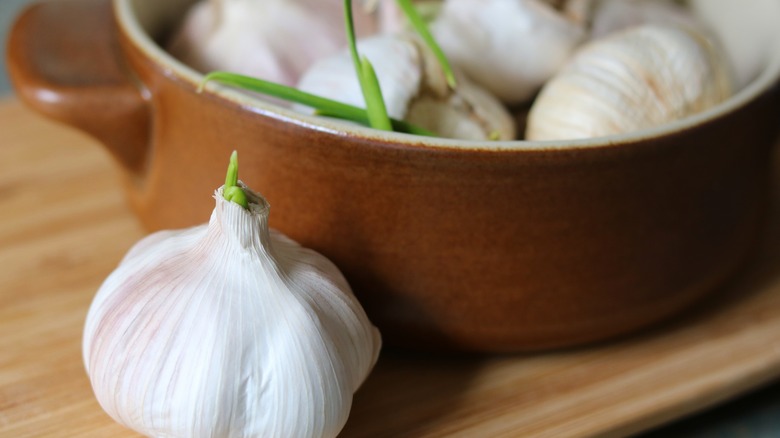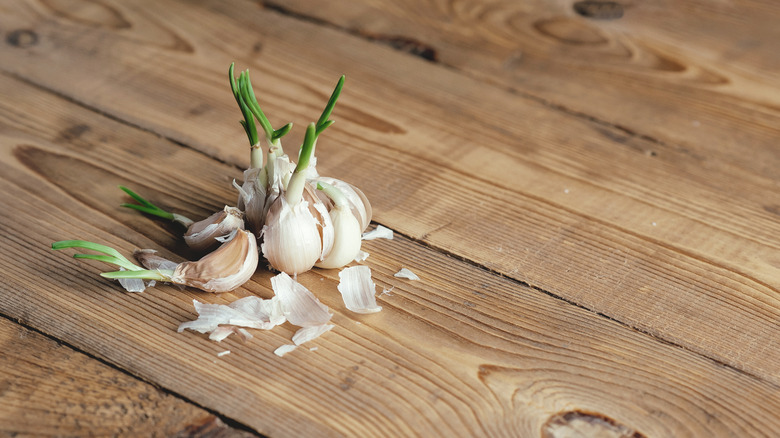Do You Need To Remove The Germ From Garlic?
If you've ever had a head of garlic sit out too long, you may have noticed small, green shoots coming out of the cloves. These little sprouts are known as garlic germs. While you might think to throw away your garlic when they appear, these germs are actually edible, though they're sometimes removed before cooking. This begs the question: For the best possible flavor, do you need to remove the germ from garlic?
It all depends on your personal preference. Garlic germs are known to be slightly bitter and can leave a pungent, unpleasant aftertaste when eaten, leading many chefs to remove them at all costs. But there are other chefs who are perfectly fine with leaving the germs in, especially with tender, young garlic. In fact, the intensity of the garlic germ's flavor mostly depends on the clove's age. The germs from young garlic aren't enlarged or overly green, so the cloves can be eaten with or without the germ and won't have a noticeable flavor difference. If your clove is older, with a visible, green germ protruding out, the bitter flavor will be much more prominent. When using garlic to create delicate flavors, such as in a garlic confit, removing the germ helps maintain a purer color and lighter taste, but if you're using the garlic raw, such as in homemade salsa, keeping the germ won't make a major difference in flavor.
How to remove the germ from garlic
If you'd like to try removing the germ from your garlic clove, first ensure that your garlic is fresh and ready for consumption. Some warning signs your garlic has gone bad are brown spots, mold, yellowing of the clove, and a soft texture. Next, remove the clove from the head. The quickest and easiest way to peel garlic is to cut off the tops and bottoms of the complete garlic head, then shake vigorously in a sealed jar until the peeled garlic cloves break free. Or, if you want to go old school, you can always peel garlic using a knife. To do so, simply place the garlic clove on a cutting board, then crush it firmly with the side of a large knife. The peel will cleanly separate if you've hit the clove with enough enthusiasm, leaving behind the treasured golden pearl.
Once you have your separated garlic clove, slice it in half lengthwise, using the tip of a sharp knife or your fingers to delicately remove the germ from the center. Since the germ can be quite small, this technique can take a few attempts to master, but it's a surefire way to remove any signs of bitterness from your clove of garlic. After removing the germ, use the garlic as usual in your recipe.

